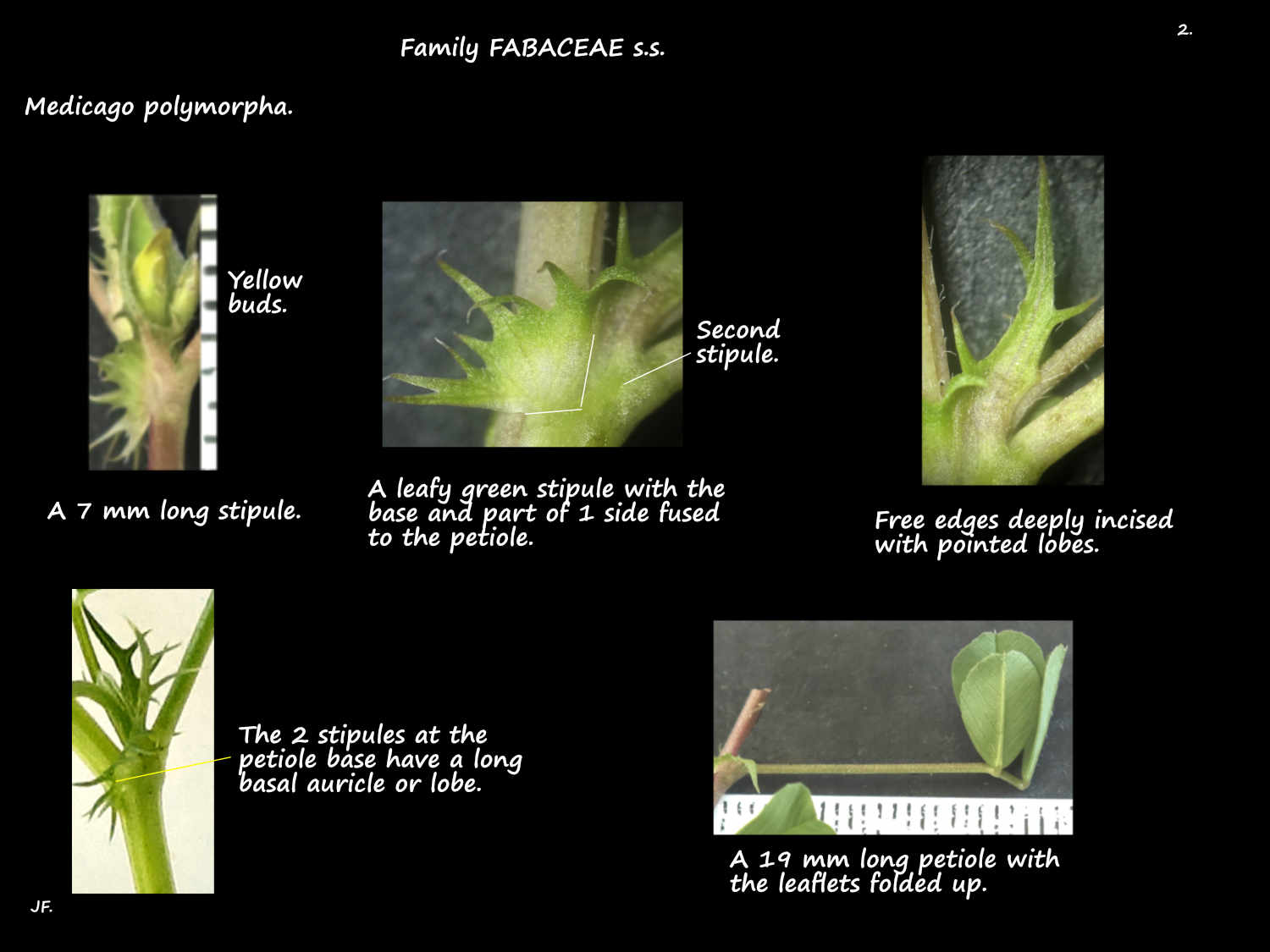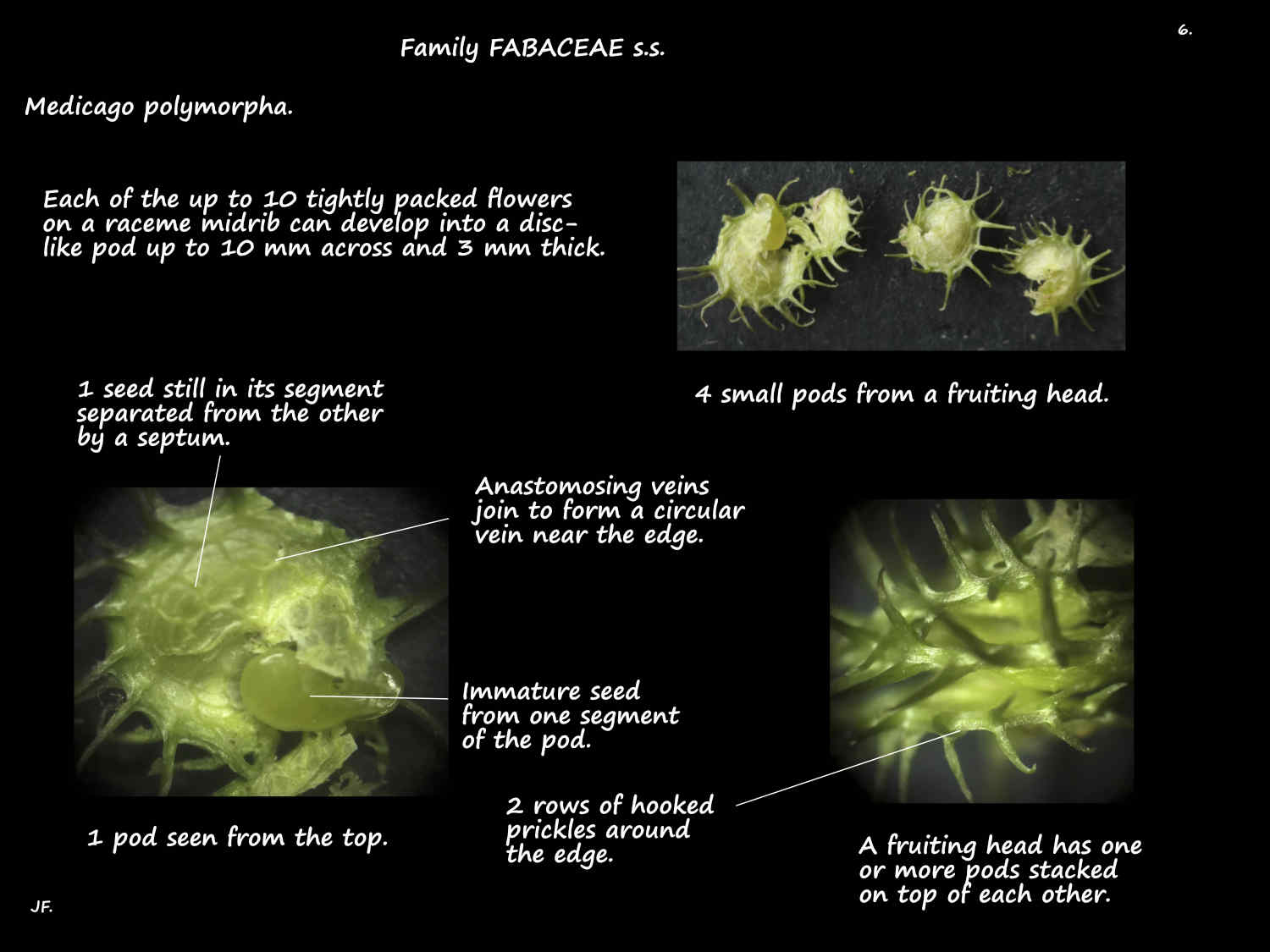Medicago polymorpha.
Family Fabaceae > Subfamily Faboideae.
The species is widely naturalised and common in S. E. Queensland.
The Burr medic, Spiny burr medic or Hairy medic is often found in lawns.
They are annual herbs with erect stems up to 30 or 40 cm high.
Prostrate stems, up to 60 cm long may root at the nodes.
Any branches are mainly near the base.
The green then red-brown stems may be smooth or have soft simple hairs.
The alternate leaves are on a petiole up to 3 or 5 cm long.
The 2 leafy stipules, up to around 15 mm long are partly fused to the petiole base.
Below the fused section each has a long basal auricle.
Their upper edge is deeply incised and there may be hairs on the outer surface or edge.
The leaf blade is trifoliate with 3 leaflets on short petiolules.
Lateral leaflets, up to around 25 mm long and 22 mm wide are obovate or obcordate (inverted heart-shaped).
The terminal leaflet, on a longer petiolule is slightly larger.
The midrib of each leaflet extends past the blade as a small mucro.
The edge may be smooth or have small teeth towards the tip.
There may be simple hairs on the petiole, petiolules and lower blade surface.
Axillary inflorescences are on a peduncle longer or shorter than the adjacent petiole.
The racemes have up to 10 flowers tightly packed on a short midrib.
Flowers, around 5 mm long are on a pedicel under 1 mm long.
The 2.5 mm long calyx has a tube with 5 teeth of variable lengths.
The yellow corolla has 5 typical ‘pea’ type petals.
The around 4 mm long standard petal is obovate with a notch at the tip.
The 2 wings enclose the shorter keel petal.
The fruit are pods that, in Australia are variable in their features.
One roughly circular pod is up to 10 mm across and around 2 mm thick.
The calyx remains attached.
Green then hard and brown it has 3 mm hooked spines around the thin edge.
Sometimes there are just nodules instead of spines.
The roughly flat upper surface of a pod has visible anastomosing veins.
A whole fruiting head has 2 up to 6 or 7 of these pods stacked upon each other.
Each pod or coil in the head is spirally twisted from the one below.
Pods have a few pale brown slightly kidney-shaped seeds separated from each other by a septum.
J.F.









